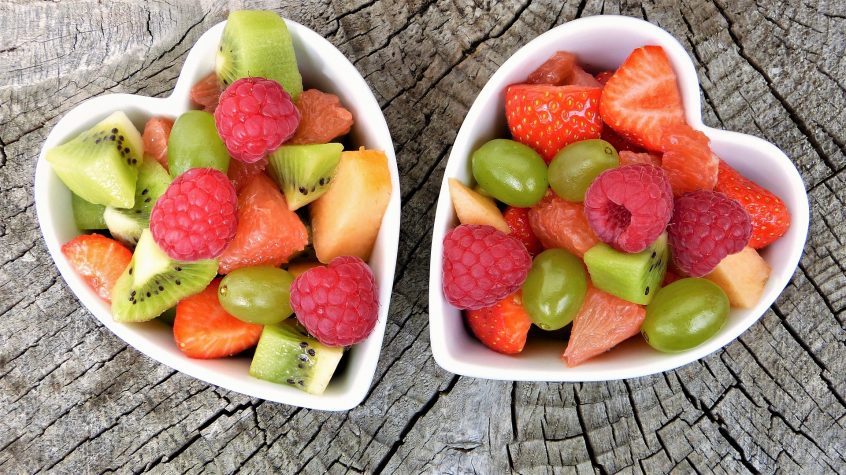This week is Heart Week and the focus this year is on the benefits of physical activity on heart health. The Heart Foundation has a wealth of information on their website at www.heartfoundation.org.au/campaigns/heartweek.
Changing your food intake can also help improve your heart health and reduce your risk of heart disease. Here are my top 10 ways that you can change your diet to help your heart.
- Reduce your intake of saturated fat
Saturated fat is the type of fat that our body uses to make cholesterol. Reducing your intake of foods that are high in saturated fat can help lower your blood cholesterol levels.
Saturated fat is found mostly in animal foods including the fat on meat, the skin on chicken, as well as the fat in dairy products like butter, cream, and full fat dairy products. You can reduce your intake of saturated fat by choosing lean meat, removing the skin from the chicken, and choosing low fat dairy products.
Saturated fat also occurs in the vegetable oils coconut oil and palm oil. Commercially baked products which use these oils (like cakes, biscuits and pastries) are also high in saturated fat.
Many takeaway foods and processed snack foods are also very high in saturated fat, so limit your intake of these foods.
- Choose healthier, plant based oils
Plant based oils contain polyunsaturated and monounsaturated fats, which can help lower cholesterol levels and reduce the risk of heart disease. These oils include olive oil, canola oil, rice bran oil, sunflower oil and safflower oil. They can be used in cooking or as a salad dressing.
Avocado is another excellent source of monounsaturated fats. It can be added to a salad, or used as a spread on wholegrain bread or crackers.
- Include nuts at least 3 times a week.
Nuts and seeds are another excellent source of polyunsaturated and monounsaturated fats. Raw, unsalted nuts are a healthy snack option. They can also be used sprinkled over fruit and yoghurt for breakfast and are great in salads.
- Eat fish at least 3 times a week
Include oily fish like salmon, tuna, sardines, mackerel or mullet as these are excellent sources of omega 3 fats. My recipe for Oven Baked Salmon and Vegetables is a great place to start.
- Include vegetables with your main meals
Aim to include vegetables at least twice a day. You can include cooked vegetables (fresh or frozen) or salad vegetables with lunch and dinner. You could also have vegetables with breakfast. Add mushrooms, tomato or asparagus to an egg on toast. See my blog with tips on how to include more vegetables into your diet for for other ways to include vegetables every day.
- Include legumes at least 3 times a week
Legumes are an excellent source of soluble fibre, which helps lower cholesterol levels. You can add chickpeas, lentils, or other legumes to soups or salad, or serve on a slice of wholegrain bread for breakfast.
- Eat fresh fruit every day
Fresh fruit is an excellent source of antioxidants and fibre, but you can also choose canned, frozen or dried fruit if that is more convenient. Choose fruit as a snack between meals or use it as a basis for your dessert. You could also try fruit and yoghurt for breakfast.
- Choose wholegrains
Less refined, wholegrain cereal foods are a great source of fibre and can also help improve cholesterol levels and reduce the risk of heart disease. Instead of processed, low fibre white bread, try wholegrain breads and experiment with other wholegrains including brown rice and quinoa.
- Include oats regularly
Oats are another excellent source of soluble fibre. Include rolled oats or porridge for breakfast or enjoy a bowl of homemade muesli. You may also like to try the Heart Foundation’s recipe for Bircher Muesli.
- Include soy products
Soy products may be beneficial in reducing cholesterol levels. You can try including soy beans, soy drink, or soy nuts.
If you would like help with lowering your cholesterol levels, or practical assistance for incorporating and dietary changes, please contact me. You can contact our practice or book an appointment on our website here.
Share this Post

